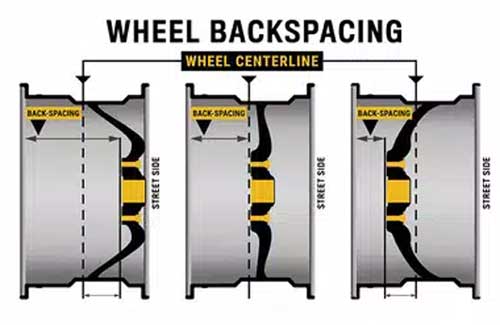Understanding ATV Wheel Offsets |
| One of the most frequently asked questions we get is "How do the ATV Wheel offsets work?" The offset of a wheel will determine where the wheel sits in relation to your vehicle. Every rim has an offset that consists of 2 numbers that are measurements. The first number is the measurement (in inches) from the inside lip of the rim, to the center of the rim where the hub and rim meet. The 2nd number is the measurement (in inches) from the hub to the outside lip of the rim. |
Positive Offset vs. Negative Offset? |
| A positive offset wheel has more rim in behind the hub of your ATV and less rim out in front of the hub. A positive offset will have a larger number first and and smaller number second. For example. 4+2, 5+2, 4+3, 5+3 |
| A negative offset wheel has less rim in behind the hub of your ATV and more rim out in front of the hub. A negative offset will have a smaller number first and a larger number second. For example. 2+5, 3+4, 3+5 |
Correct wheel offsets for STRAIGHT REAR AXLE models? |
FRONT - You will need a positive offset for the front which could be one of several options, it just depends on what is offered in the rims you are buying.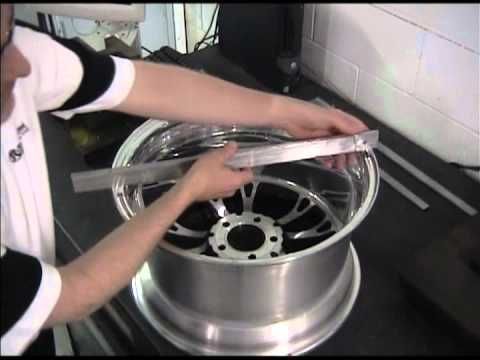 You will want the first number to be larger than the second number. For example, 4+2, 4+3, 5+2
You will want the first number to be larger than the second number. For example, 4+2, 4+3, 5+2 |
| REAR - You will need a negative offset for the rear which could be one of a couple options, it just depends on what is offered in the rims you are buying. You will want the first number to be smaller than the first number. For example, 2+5, 3+5, 3+4 |
Correct offsets for INDEPENDENT REAR SUSPENSION? |
| You have two options: |
OPTION 1 - You can buy rims that are all 4 the same width. If you buy rims that are the same width front and back you will want to get the same positive offset rim for the front and back. For example, a 5+2, 4+3, or 6+1 (depending on your machine) and you would buy the exact same offset for the front and the rear. This works great even though most factory rims are two different widths. You don't have to stick with that, you can buy the same rims front and rear and run the same size tires front and rear or you can get two different widths of tires and mount them on the same size rims.
|
| OPTION 2 - You can buy rims that are two different widths. There are some rims out there that are offered in a skinnier size for the front and a wider size for the rear just like your factory rims. If you go this route you will still want to run a positive offset for both the front and the rear but they will not be the same offset because they are two different widths. For example, you would order a 4+2 or a 4+3 for the front and a 4+4 or 5+3 for the rear, it would just depend on what is being offered for the style of rims you are buying. |
Correct wheel offsets to WIDEN MY STANCE? |
Wide stance offsets (aka negative offsets) can only be used on ATVs or UTVs with the Independent Rear Suspension, and they are not available in all fitments. They are generally used on UTVs to widen the stance & increase stability. However, they can also be used on some ATVs if you are looking to widen your stance and make your machine more extreme and aggressive looking. In order to widen your stance substantially you would want to order a rim with a negative offset, so the first number is smaller than the second number. For example, 2+5, 3+4, 3+5. Another option to widen your stance is to use wheel spacers.
In order to widen your stance substantially you would want to order a rim with a negative offset, so the first number is smaller than the second number. For example, 2+5, 3+4, 3+5. Another option to widen your stance is to use wheel spacers. |
Example of 5+2 offset: |
| A 5+2 offset is the most standard offset when it comes to ATV wheels. The face of the rims is closer to the exposed edge and the majority of the rim & tire sit in underneath your ATV. The 5+2 offset is used on the front of almost any utility ATV/UTV. A 5+2 offset is also used on the rear of any Independent rear suspension model ATV. If your ATV has the independent rear suspension it will use the exact same offset on front and rear when you buy aftermarket rims. If your ATV has the straight rear axle you'll need to order a different offset for the rear which is shown below. |
Example of 2+5 offset: |
A 2+5 offset is most commonly used on the rear of any ATV that has a straight axle on back. These are commonly referred to as "deep dish" or "negative offset" wheels because the face of the rim is recessed in about 5" from the outside edge. 2+5 offsets can also be used on front and rear of an independent rear suspension model ATV/UTV if you are looking to increase the width of your machine and gain stability. A 2+5 offset wheel will stick out about 3 inches wider per side from the standard 5+2 offset wheel.
These are commonly referred to as "deep dish" or "negative offset" wheels because the face of the rim is recessed in about 5" from the outside edge. 2+5 offsets can also be used on front and rear of an independent rear suspension model ATV/UTV if you are looking to increase the width of your machine and gain stability. A 2+5 offset wheel will stick out about 3 inches wider per side from the standard 5+2 offset wheel. |
Measuring your ATV's Bolt Pattern: |
| When measuring your ATV's bolt pattern you will want to check both the front and rear. Some ATV models use a different bolt pattern on front and back so you'll want to double check yours before purchasing new wheels. You can also view our ATV Bolt Pattern guide to find out. |
Ever wondered what in the world an “offset” means? More importantly, why do we need them. . and how does a +10mm or -47mm offsets really apply or affect my vehicle/machine? This thread is dedicated to help you better understand and make sense of this very easy but very important factor in wheel manufacturing. As an ATV wheel fan, you may be used to things being explained in backspacing* which looks like this: 5+2 or 4+3. While this version of offset is easy to understand on a basic level, it lacks the details and specifics that a +/-mm offset provides, which can mean the difference between wheels rubbing, sticking our too far or just plain not fitting. If the offset of the wheel is not correct for the vehicle, the handling can also be adversely affected. When the width of the wheel changes, the offset also changes numerically. If the offset were to stay the same while you added width, the additional width would be split evenly between the inside and outside. Read below for the basics of what offset means and then use the diagram below to put it all into prospective and make your wheel shopping a little easier to understand.
. and how does a +10mm or -47mm offsets really apply or affect my vehicle/machine? This thread is dedicated to help you better understand and make sense of this very easy but very important factor in wheel manufacturing. As an ATV wheel fan, you may be used to things being explained in backspacing* which looks like this: 5+2 or 4+3. While this version of offset is easy to understand on a basic level, it lacks the details and specifics that a +/-mm offset provides, which can mean the difference between wheels rubbing, sticking our too far or just plain not fitting. If the offset of the wheel is not correct for the vehicle, the handling can also be adversely affected. When the width of the wheel changes, the offset also changes numerically. If the offset were to stay the same while you added width, the additional width would be split evenly between the inside and outside. Read below for the basics of what offset means and then use the diagram below to put it all into prospective and make your wheel shopping a little easier to understand.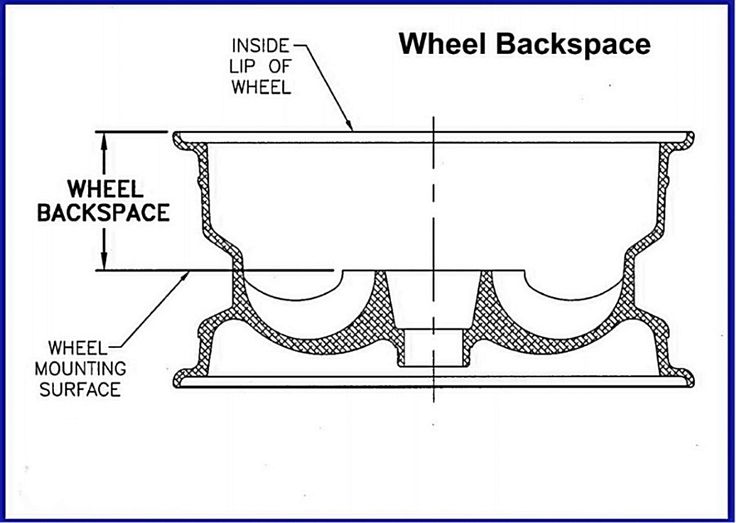 Questions? Give us a shout: (800) 734-4890
Questions? Give us a shout: (800) 734-4890
Lets make this easy on all of us. The offset of a wheel is the distance from its hub mounting surface to the centerline of the wheel. The whole point of an offset is for the end user of the wheel to know how much in inches (4+3) or in the case of millimeter offset, how many mm the wheel will stick out or suck in from the mounting surface of the hub. Remember, even a couple of millimeters can affect performance, ride quality, the look/stance of your vehicle and more important than anything, how safe the setup is.
Because you are reading this, you have probably spent some time trying to figure out how to get your machine to run as true to stock as you can. Although we completely understand this effort as stock means safe, you must understand that the other reason you are here is because you want nice, custom looking wheels. A stock wheel, no matter what OEM manufacturer, is going to run a +high offset, typically in the +30mm to +40mm range. This allows the wheel to “suck-in” under the vehicle more, keeping your center of gravity under the cockpit and reducing overall machine width. The problem with a +30mm and higher offset is that the hub is so close to the front of the wheel, the design of the wheel is going to suffer tremendously. The deep lips and steep spoke drops just cant happen within 2 inches of room. Reverse the offset (-47mm) and you now have 5 inches of design space for swooping, dramatic spokes and just 2 inches for hub clearance. The basics: The offset can be one of three types (measured in millimeters).*
This allows the wheel to “suck-in” under the vehicle more, keeping your center of gravity under the cockpit and reducing overall machine width. The problem with a +30mm and higher offset is that the hub is so close to the front of the wheel, the design of the wheel is going to suffer tremendously. The deep lips and steep spoke drops just cant happen within 2 inches of room. Reverse the offset (-47mm) and you now have 5 inches of design space for swooping, dramatic spokes and just 2 inches for hub clearance. The basics: The offset can be one of three types (measured in millimeters).*
The hub mounting surface is even with the centerline of the wheel (dashed line to left).
The hub mounting surface is toward the front or “wheel side” of the wheel. Positive offset wheels are generally found on front wheel drive cars and newer rear drive cars. An example of a positive offset wheel is the Polaris RZR 1000 which comes stock with a +38mm offset. Higher offsets restrict design and leave the wheel looking flat, with little to no depth in spoke design/lip.
Higher offsets restrict design and leave the wheel looking flat, with little to no depth in spoke design/lip.
The hub mounting surface is toward the back or brake side of the wheel. “Deep dish” wheels are typically a negative offset and benefit the design process by allowing sharp angles, deep spokes and incredible layering.
The easiest way to measure backspace is to lay the wheel face down onto the ground so the backside of the wheel is facing up. Take a straight edge and lay it diagonally across the inboard flange of the wheel (like picture above). Take a tape measure and measure the distance from where the straight edge contacts the inboard flange to the hub mounting pad of the wheel. This measurement is backspace. Backspacing, similar to offset, is the distance from the hub mounting surface to the inside lip of the wheel (measured in inches).
Wheel backspace (see above)
Wheel width
Wheel centerline (outboard flange to inboard flange measurement, divided by 2)
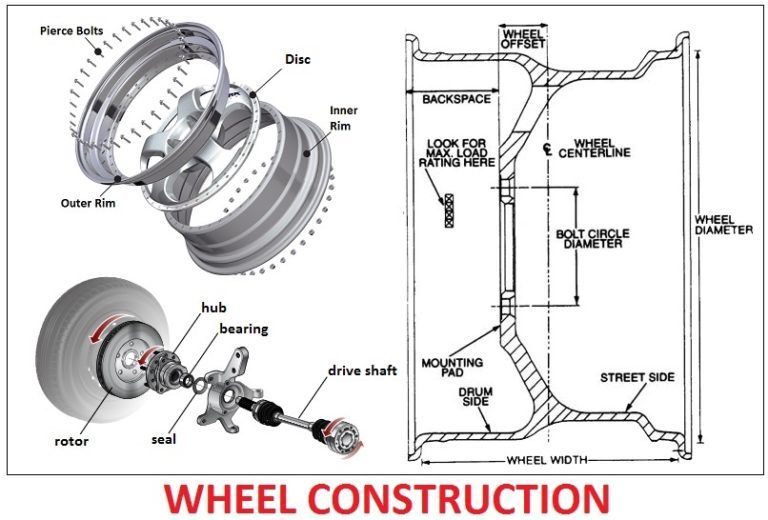
If backspace is less than the wheel centerline, the offset is negative
if backspace is greater than the wheel centerline, the offset is positive
To convert inches to millimeters, multiply inches by 25.4
To convert millimeters to inches, divide mm by 25.4
home
Articles
* These tables are for informational purposes only and are not intended as a guide to action. For specific applicability of non-standard discs, please contact the vehicle manufacturer or vehicle dealer. We do not test wheel interchangeability and cannot make recommendations.
| Landing width of the disc | Minimum tire width | Optimum tire width | Maximum tire width |
|---|---|---|---|
5.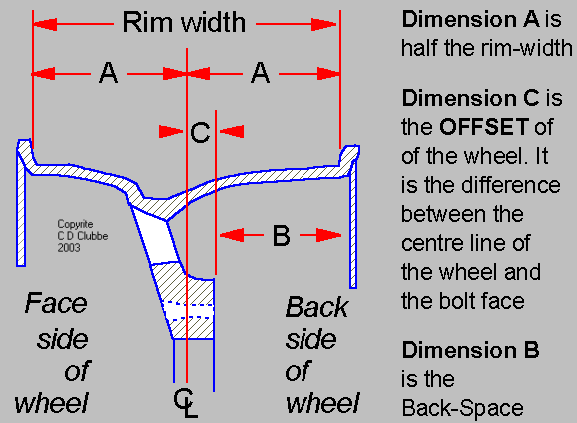 0 inches 0 inches | 155 mm | 165 or 175 mm | 185 mm |
| 5.5 inches | 165 mm | 175 or 185 mm | 195 mm |
| 6.0 inches | 175 mm | 185 or 195 mm | 205 mm |
| 6.5 inches | 185 mm | 195 or 205 mm | 215 mm |
| 7.0 inches | 195 mm | 205 or 215 mm | 225 mm |
| 7.5 inches | 205 mm | 215 or 225 mm | 235 mm |
| 8.0 inches | 215 mm | 225 or 235 mm | 245 mm |
| 8.5 inches | 225 mm | 235 or 245 mm | 255 mm |
| 9.0 inches | 235 mm | 245 or 255 mm | 265 mm |
| 9.5 inches | 245 mm | 255 or 265 mm | 275 mm |
10.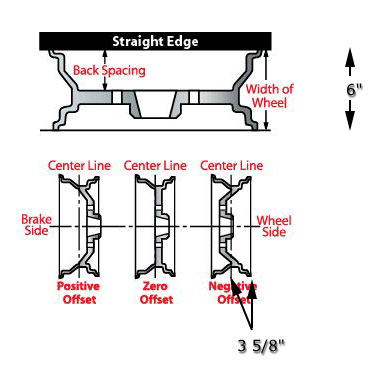 0 inches 0 inches | 255 mm | 265 or 275 mm | 285 mm |
| 10.5 inches | 265 mm | 275 or 285 mm | 295 mm |
| 11.0 inches | 275 mm | 285 or 295 mm | 305 mm |
| 11.5 inches | 285 mm | 295 or 305 mm | 315 mm |
| 12.0 inches | 295 mm | 305 or 315 mm | 325 mm |
| 12.5 inches | 305 mm | 315 or 325 mm | 335 mm |
| Profile | Designation in metric dimension | Permissible range of landing width of the disk |
|---|---|---|
| 35 Series | 275/35R17 | 9.0-10.5 |
| 335/35R17 | 11. 0-13.0 0-13.0 | |
| 345/35R15 | 11.0-13.5 | |
| 40 Series | 285/40R15 | 11.0-13.5 |
| 215/40R15 | 7.0-8.5 | |
| 245/40R17 | 8.0-9.5 | |
| 255/40R17 | 8.5-10.0 | |
| 265/40R17 | 8.5-10.0 | |
| 235/40R18 | 8.0-9.5 | |
| 45 Series | 195/45/R15 | 6.5-7.5 |
| 215/45R15 | 7.0-8.5 | |
| 255/45R15 | 8.5-10.0 | |
| 205/45R16 | 7.0 | |
| 225/45R16 | 7.5-9.0 | |
| 245/45R16 | 8.0-9.5 | |
| 215/45R17 | 7.0-8.5 | |
| 235/45R17 | 8.0-9.5 | |
| 255/45R17 | 8. 5-10.5 5-10.5 | |
| 50 Series | 175/50R13 | 5.0-6.0 |
| 195/50R14 | 5.5-7.0 | |
| 205/50R15 | 5.5-7.5 | |
| 215/50R15 | 6.0-7.5 | |
| 225/50R15 | 6.0-8.0 | |
| 195/50R16 | 5.5-7.0 | |
| 205/50R16 | 5.5-7.5 | |
| 225/50R16 | 6.0-8.0 | |
| 235/50R16 | 6.5-8.5 | |
| 215/50R17 | 6.5-7.5 | |
| 55 Series | 205/55R14 | 5.5-7.5 |
| 185/55R15 | 6.0-6.5 | |
| 195/55R15 | 5.5-7.0 | |
| 205/55R15 | 5.5-7.5 | |
| 205/55R16 | 5.5-7.5 | |
| 225/55R16 | 6.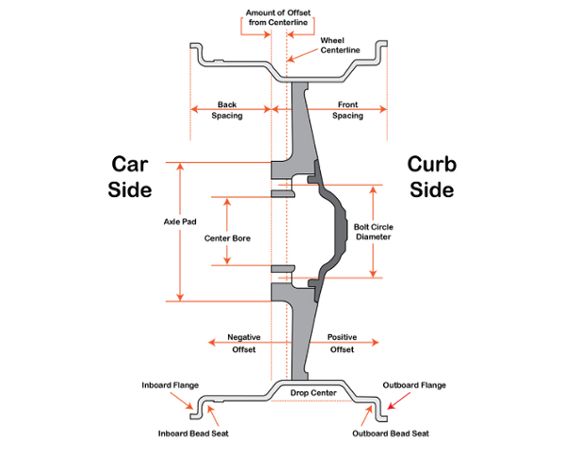 0-8.0 0-8.0 | |
| 60 Series | 185/60R13 | 5.0-6.5 |
| 205/60R13 | 5.5-7.5 | |
| 185/60R14 | 5.0-6.5 | |
| 195/60R14 | 5.5-7.0 | |
| 205/60R14 | 5.5-7.5 | |
| 195/60R15 | 5.5-7.0 | |
| 205/60R15 | 5.5-7.5 | |
| 215/60R15 | 6.0-7.5 | |
| 225/60R15 | 6.0-8.0 | |
| 235/60R15 | 6.5-8.5 | |
| 65 Series | 185/65R15 | 5.0-6.5 |
| 195/65R15 | 5.5-7.0 | |
| 205/65R15 | 5.5-7.5 | |
| 215/65R15 | 6.0-7.5 | |
| 70 Series | 165/70R10 | 4.5-5.5 |
| 175/70R12 | 5.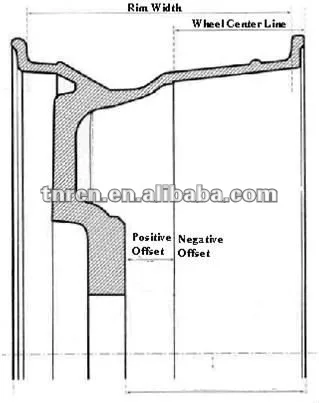 0-6.0 0-6.0 | |
| 175/70R13 | 5.0-6.0 | |
| 205/45R16 | 7.0 | |
| 185/70R13 | 5.0-6.5 | |
| 185/70R14 | 5.0-6.5 | |
| 195/70R15 | 5.5-7.0 | |
| 205/70R14 | 5.5-7.5 | |
| 185/70R15 | 5.0-6.5 | |
| 205/70R15 | 5.5-7.5 | |
| 215/70R15 | 6.0-7.5 | |
| 82 Series | 155R12 | 4.0-5.0 |
| 155R13 | 4.0-5.5 | |
| 165R13 | 4.0-5.5 | |
| 175R14 | 4.5-6.0 | |
| 185R14 | 4.5-6.0 | |
| 165R15 | 4.0-5.5 | |
| Profile | Designation in metric dimension | Permissible range of landing width of the disk |
|---|---|---|
| 75 Series | P205/75R15 | 5. 5-7.5 5-7.5 |
| P215/75R15 | 5.5-7.5 | |
| P225/75R15 | 6.0-8.0 | |
| P235/75R15 | 6.0-8.0 | |
| 80 Series | P155/80R13 | 4.5-5.5 |
| P165/80R13 | 4.5-6.0 | |
| P175/80R13 | 4.5-6.0 | |
| P185/80R13 | 5.0-6.5 | |
| 35 Series | P315/35R17 | 10.0-12.0 |
| 40 Series | P275/40R17 | 8.5-10.0 |
| 50 Series | P215/50R13 | 5.5-8.5 |
| P235/50R13 | 6.0-9.0 | |
| P245/50R14 | 6.5-9.0 | |
| P225/50R15 | 6.0-8.0 | |
| P295/50R15 | 7.5-11.0 | |
| P225/50R16 | 6.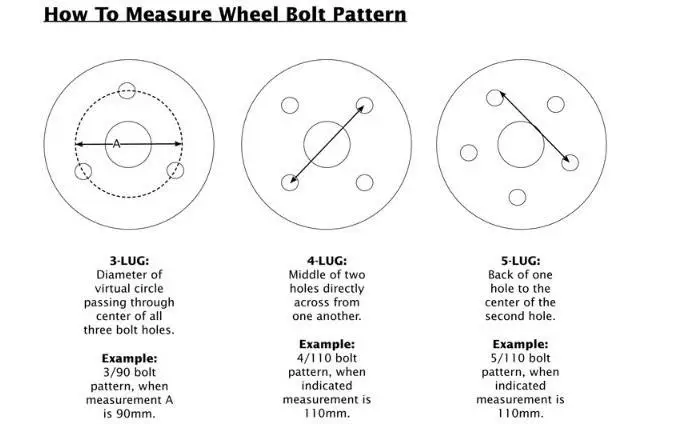 0-8.0 0-8.0 | |
| P245/50R16 | 6.5-9.5 | |
Return to list
05/17/2018
tell the owner of the ATV everything that interests him. And if you are for some If you don't know what these mysterious numbers mean, then you can be mistaken when choosing the next set of tires. But tires directly determine whether it will go technique further or not. So, in this article you will close all the questions on about the decoding of size ATV tire .
All tires have their own basic parameters - this is the width, height and diameter. The value of these parameters is mainly measured in inches. Exists two units:
1) If you have ATV, then this is for you. English version is the most common number system that is used when determination of tire dimensions on ATVs.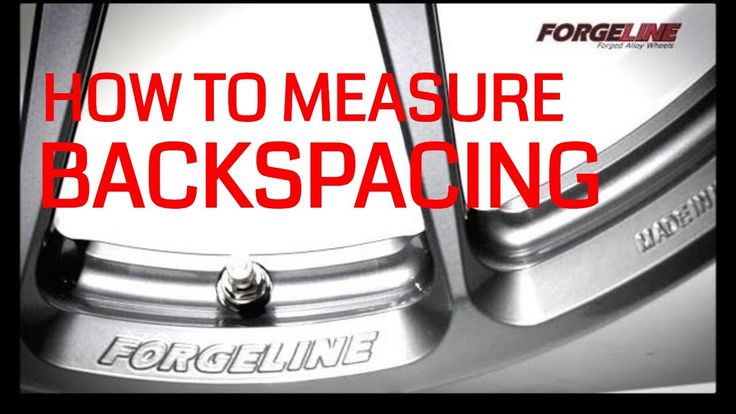 All measurements here are in inches. (1 inch equals 2.54 cm). For example, the size indicated in English classification looks like this - 25x8x12 . Let's take a closer look at the meaning of each digit:
All measurements here are in inches. (1 inch equals 2.54 cm). For example, the size indicated in English classification looks like this - 25x8x12 . Let's take a closer look at the meaning of each digit:
- The first digit 25 shows the height of the tire in inches;
- The second digit 8 indicates the width of the tire in inches;
- The last, third digit 12 indicates the diameter of the wheel disk, it is also measured in inches. Disc diameter on each ATV can be different. Therefore, be careful before you buy tires for ATV, see what regular disks are installed on your vehicle.
And a very important point worth noting. Often our customers ask themselves: “If I have a tire size of 20x10x10, can I put instead of them 20x11x10? The answer is yes. First, you can put rubber on regular wheels with a size exceeding 1 inch in height and width. Secondly, if you want tires even wider, then for this you will need to buy other disks.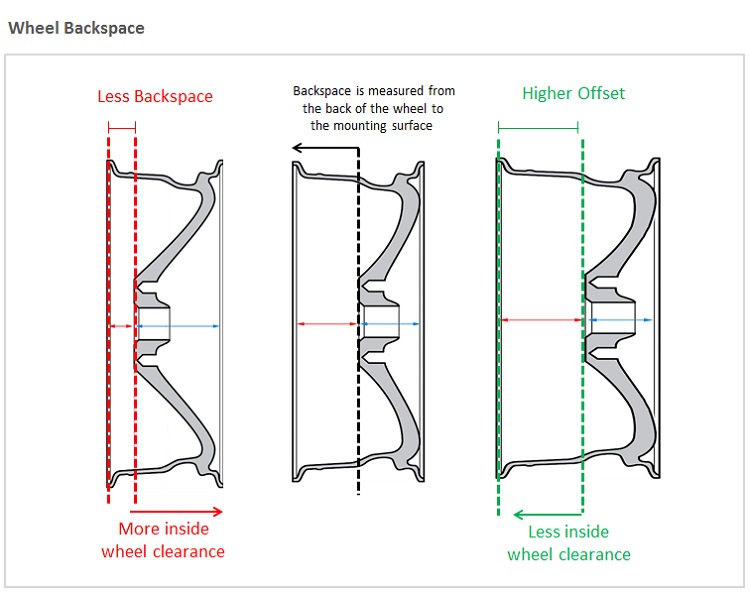 But again, there are limitations. On discs of other diameters, you can install rubber, the largest is only 2 inches in height and width.
But again, there are limitations. On discs of other diameters, you can install rubber, the largest is only 2 inches in height and width.
These two rules must be strictly observed, otherwise, if you try to put tires of an unacceptably large size, this may adversely affect on a quad bike. After all, the rubber will be larger and, accordingly, heavier, which does not fit the technical parameters of the ATV. In production ATVs take into account all the characteristics, so manufacturers of ATV equipment I don't recommend using larger tires at all. But if you do decided to increase the size of tires, call our toll-free number, we we will help.
2) Also there is another version - metric . Here the dimensions are indicated in percentage and millimeters. For example, size specified according to the metric classification - 205/80 Rx12 . Such designations are usually used on automobile tires. Let's see what's what:
- The first digit of 205 shows the total tire width in millimeters.